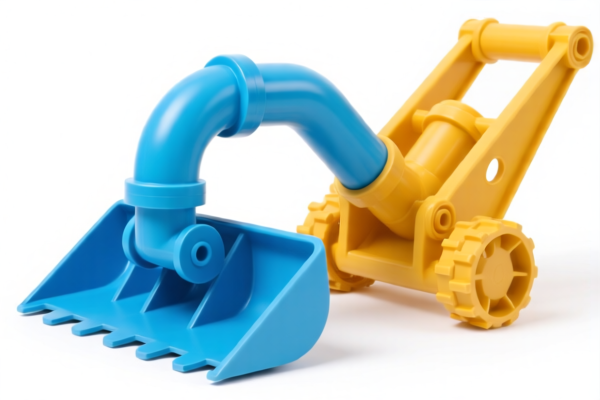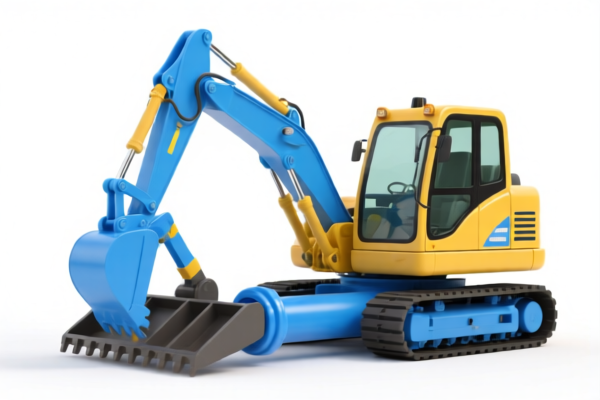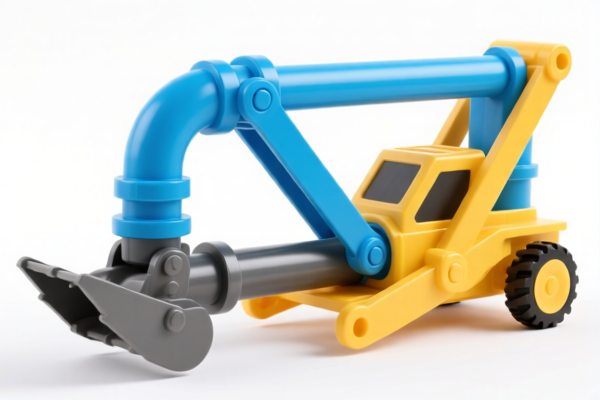| HS Code | Official Doc | Tariff Rate | Origin | Destination | Effective Date |
|---|---|---|---|---|---|
| 8479810000 | Doc | 55.0% | CN | US | 2025-05-12 |
| 8479909565 | Doc | 55.0% | CN | US | 2025-05-12 |
| 8487900080 | Doc | 83.9% | CN | US | 2025-05-12 |
| 8487900040 | Doc | 58.9% | CN | US | 2025-05-12 |




Pipe Bending Machine
A pipe bending machine is a tool used to bend pipes, tubing, and other hollow sections to a desired angle or radius. These machines are essential in various industries, including construction, automotive, aerospace, and manufacturing, where precise and repeatable bends are required.
Materials
Pipe bending machines are designed to work with a wide variety of materials, including:
- Steel: Carbon steel, alloy steel, stainless steel. The most common material processed.
- Aluminum: Various alloys, requiring specific die configurations to prevent cracking.
- Copper: Often used in plumbing and HVAC applications.
- Brass: Used in decorative and specialized applications.
- Plastic: Including PVC, CPVC, and PEX, requiring specialized bending forms and often heat assistance.
- Titanium: Used in aerospace and high-performance applications, requiring specialized techniques due to its unique properties.
Purpose and Function
The primary purpose of a pipe bending machine is to create accurate, consistent bends in pipes without causing significant deformation, kinking, or weakening of the material. The function relies on controlled deformation of the pipe material, typically achieved through:
- Three-Point Bending: Uses a die, a clamp, and a wiper die to support the pipe during bending, preventing ovalization.
- Rotary Draw Bending: The pipe is clamped and rotated around a die while being drawn along a radius. This method produces smoother bends with minimal distortion.
- Roll Bending: Uses multiple rollers to gradually bend the pipe around a radius. Suitable for larger radius bends.
- Compression Bending: The pipe is compressed on one side to induce bending. Often used for smaller radius bends and thinner-walled tubing.
Usage Scenarios
- Construction: Creating pipe supports, handrails, and structural components.
- Automotive: Manufacturing exhaust systems, roll cages, and chassis components.
- HVAC: Bending copper tubing for refrigeration and air conditioning systems.
- Plumbing: Creating precise bends in pipes for residential and commercial installations.
- Aerospace: Forming complex tubing shapes for fluid and structural systems.
- Manufacturing: Producing custom pipe components for various industrial applications.
- Art and Sculpture: Creating decorative pipe structures.
Common Types
- Manual Pipe Benders: Hand-operated machines, suitable for small-scale projects and portable applications. Require physical effort and skill. Often used for smaller diameter pipes.
- Hydraulic Pipe Benders: Utilize hydraulic cylinders to provide the force needed for bending. Offer greater bending capacity and precision than manual benders. Available in portable and stationary models.
- Electromechanical Pipe Benders (CNC): Computer-controlled machines that provide highly accurate and repeatable bends. Ideal for high-volume production and complex geometries. Often feature automated material feeding and unloading.
- Rotary Draw Benders: Used for bending pipes with tight radii and minimal ovalization. Commonly found in automotive and aerospace industries.
- Roll Benders: Suitable for bending large-diameter pipes and creating large radius bends.
- Downhole Benders: Specialized machines used in the oil and gas industry for bending pipes during well construction.
Pipe bending machines fall under the category of machines and mechanical appliances having individual functions, specifically for treating metal. Here's a breakdown of relevant HS codes based on the provided information:
-
8479.81.00.00: This HS code covers machines and mechanical appliances having individual functions, not specified or included elsewhere in this chapter; parts thereof: Other machines and mechanical appliances: For treating metal, including electric wire coil-winders. This is a broad category encompassing metal treatment machines, and a pipe bending machine would likely fall under this classification. The base tariff is 0.0%, with an additional 25.0% tariff, increasing to 30.0% after April 2, 2025, resulting in a total tariff of 55.0%.
-
8479.90.95.65: This HS code covers machines and mechanical appliances having individual functions, not specified or included elsewhere in this chapter; parts thereof: Parts: Other Other: Of machines or mechanical appliances for treating metal. If importing parts for a pipe bending machine, this code would be applicable. The tariff structure mirrors 8479.81.00.00: 0.0% base tariff, 25.0% additional tariff (increasing to 30.0% after April 2, 2025), for a total of 55.0%.
-
8487.90.00.80: This HS code covers machinery parts, not containing electrical connectors, insulators, coils, contacts or other electrical features, and not specified or included elsewhere in this chapter: Other Other. If importing non-electrical parts for the pipe bending machine, this code may be relevant. The base tariff is 3.9%, with an additional 25.0% tariff (increasing to 30.0% after April 2, 2025), resulting in a total tariff of 83.9%. Note that for steel or aluminum products, the additional tariff is 25%.
-
8487.90.00.40: This HS code covers machinery parts, not containing electrical connectors, insulators, coils, contacts or other electrical features, and not specified or included elsewhere in this chapter: Other Oil seals, other than those of chapter 40. If importing oil seals for the pipe bending machine (and they are not covered under chapter 40), this code may apply. The tariff structure is 3.9% base tariff, 25.0% additional tariff (increasing to 30.0% after April 2, 2025), for a total of 58.9%.
Regarding HS code 8487.90.00.80, please note the need to verify the material composition (steel or aluminum) as this impacts the applicable additional tariff.
Customer Reviews
No reviews yet.